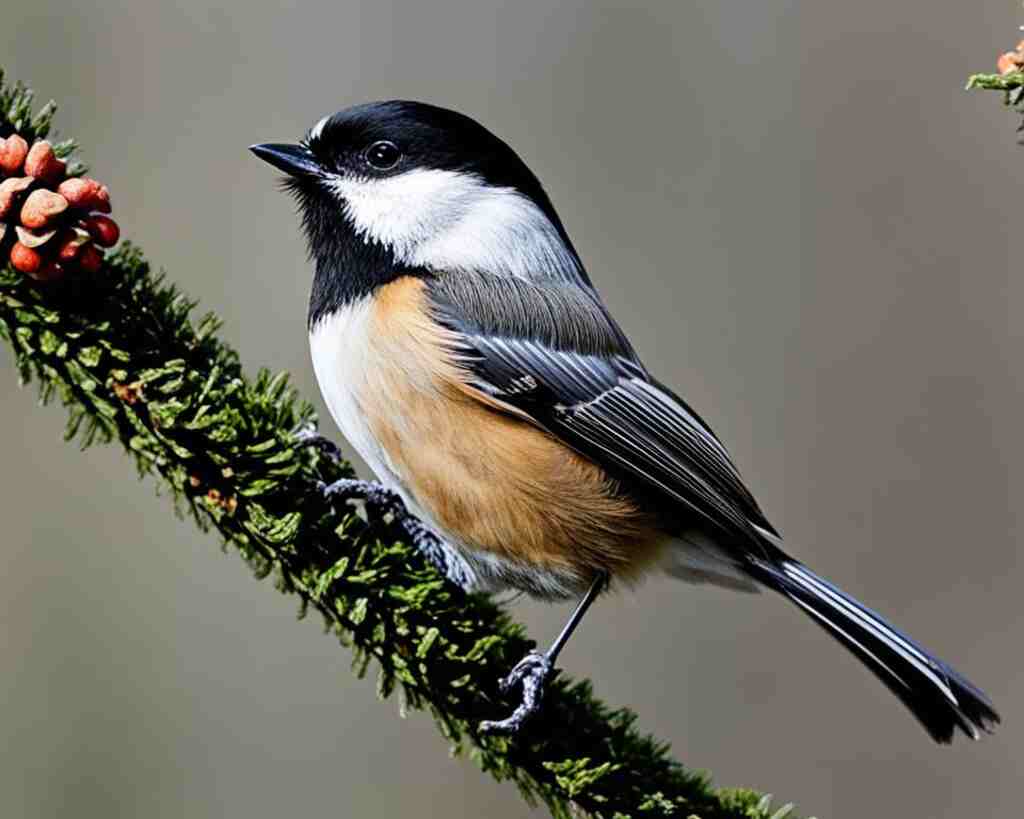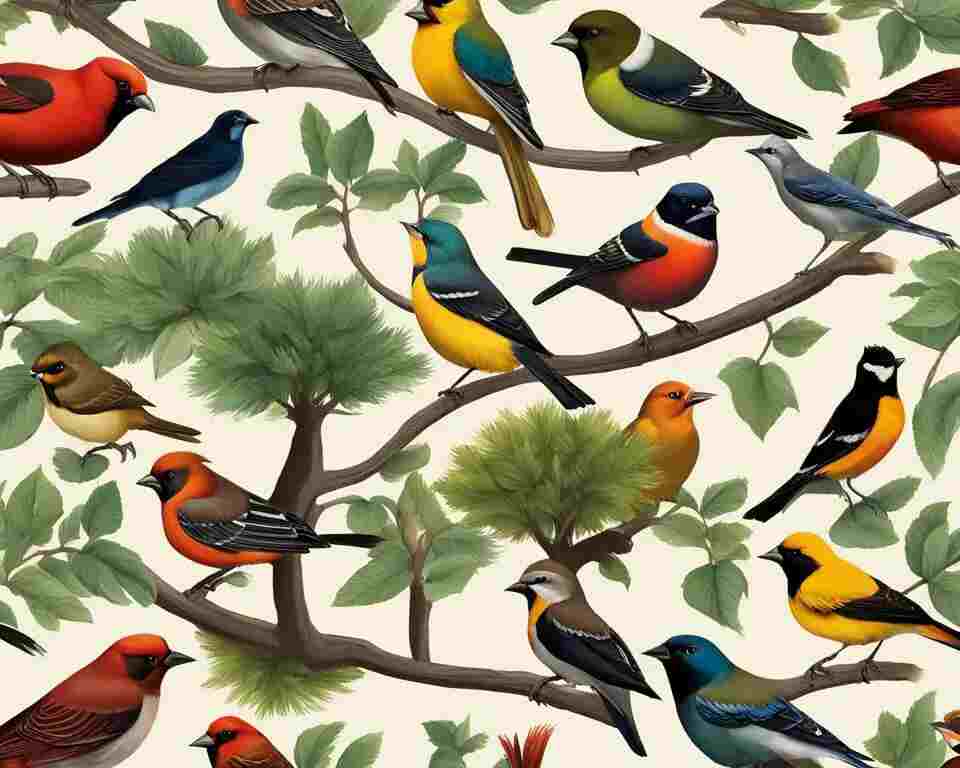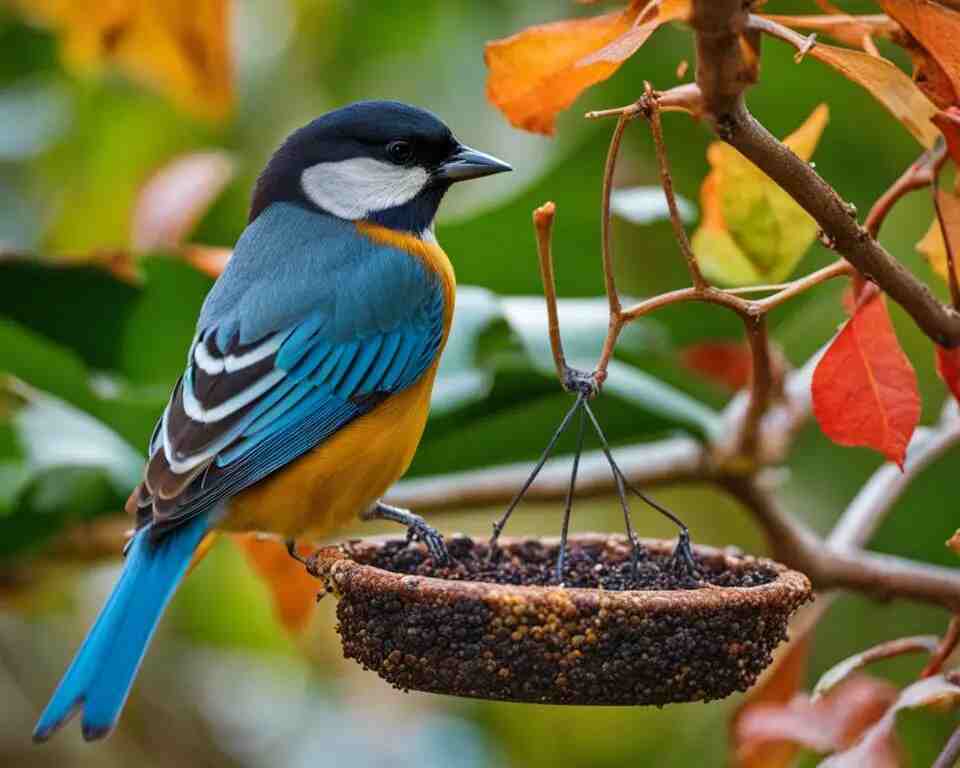As an avian enthusiast, I’ve always been fascinated by the lifespan of backyard birds. Understanding how long these feathered creatures live is crucial for creating a nurturing environment that promotes their well-being.
In this article, I will look into the average lifespan of common backyard birds in the United States and uncover the factors that influence their longevity in our gardens.
Table of Contents
Key Takeaways:
- Backyard birds have varying lifespans depending on factors like species, genetics, and environmental conditions.
- The average lifespan of backyard birds can range from a few years to over a decade.
- Factors such as predators, human impact, metabolic rates, bird sizes, and reproductive strategies play a role in determining their lifespan.
- Creating suitable habitats, protecting them from predators, and enhancing their overall well-being can contribute to increasing their lifespan.
- By understanding the lifespan of backyard birds, we can take measures to ensure their longevity in our backyards.
How Long Do Backyard Birds Live
Backyard birds can have varying lifespans depending on several factors. While some species only live for a couple of years, others can survive for a decade or more. We will look into the average lifespan of different backyard bird species and discuss any variations between them.
| Bird | Lifespan (Oldest Recorded) | Average Lifespan Range | Location | Banding Year | Found/Identified Year | Source |
|---|---|---|---|---|---|---|
| American Goldfinch | 10 years, 9 months | 6 to 11 years | Maryland | Not specified | Not specified | Link |
| Blue Jay | At least 26 years, 11 months | 7 to 17 years | Newfoundland/Labrador/St. Pierre et Miquelon | 1989 | 2016 | Link |
| Black-capped Chickadee | At least 11 years, 8 months | 2 to 10 years | New York | 2009 | 2021 | Link |
| Northern Cardinal | 15 years, 9 months | 3 to 15 years | Pennsylvania | Not specified | Not specified | Link |
| American Robin | 13 years, 11 months | 2 to 6 years | Not specified | Not specified | Not specified | Link |
| House Sparrow | At least 15 years, 9 months | 2 to 5 years | Texas | Not specified | Not specified | Link |
| Mourning Dove | At least 30 years, 4 months | 1 to 5 years | Florida | 1968 | 1998 | Link |
| House Finch | At least 11 years, 7 months | 2 to 6 years | New York | 1973 | 1985 | Link |
| Eastern Bluebird | At least 10 years, 6 months | 6 to 10 years | South Carolina | 1989 | 1999 | Link |
| Tufted Titmouse | At least 13 years, 3 months | 2 to 13 years | Virginia | 1962 | 1974 | Link |
| Red-winged Blackbird | 15 years, 9 months | 2 to 15 years | New Jersey | 1967 | 1983 (Found injured) | Link |
| European Starling | At least 15 years, 3 months | 2 to 4 years | Tennessee | 1958 | 1972 (Found dead) | Link |
| Downy Woodpecker | At least 11 years, 11 months | 4 to 11 years | California | 1985 | 1996 | Link |
| American Crow | At least 17 years 5 months | 7 to 8 years | Washington State | Not specified | Not specified | Link |
| White-breasted Nuthatch | At least 9 years, 9 months | 2 to 9 years | Colorado | Not specified | 1971 | Link |
| Dark-eyed Junco | At least 11 years, 4 months | 3 to 5 years | West Virginia | 1991 | 2001 | Link |
| Northern Mockingbird | At least 14 years, 10 months | 8 to 10 years | Texas | Not specified | Not specified | Link |
| Carolina Wren | At least 7 years, 8 months | 2 to 6 years | Florida | 1997 | 2004 | Link |
| Red-bellied Woodpecker | At least 12 years, 3 months | 9 to 12 years | Georgia | Not specified | Not specified | Link |
| Common Grackle | At least 23 years, 1 month | 3 to 8 years | Minnesota | 1994 | 1994 (Killed by a raptor) | Link |
Exploring Backyard Bird Longevity
The lifespan of backyard birds can vary greatly due to a multitude of factors. Understanding the reasons behind these variations can provide valuable insights into bird aging and longevity.
In this section, we will examine why bird lifespans vary so greatly, explore the astonishing age records of wild birds, and gain a better understanding of bird aging and longevity.
Why Bird Lifespans Vary So Greatly
There are several factors that contribute to the wide range of bird lifespans. Genetics play a significant role, as certain species may have inherent traits that affect their longevity. Environmental factors, such as the availability of food, water, and suitable nesting sites, also impact bird lifespan.
Additionally, natural selection plays a crucial role in shaping bird populations, favoring individuals that are better adapted to survive and reproduce. By examining these factors, we can gain valuable insights into the variations in bird lifespans.
The Astonishing Age Records of Wild Birds
Wild birds have been known to achieve astonishing age records, surpassing the expectations of many. Certain species have been documented to live for several decades, defying the limitations that are commonly associated with avian lifespans.
The exceptional longevity of these birds is a testament to their resilience and adaptability in the wild. By exploring these age records, we can gain a deeper appreciation for the potential longevity of backyard birds.
Understanding Bird Aging and Longevity
Scientists have made significant progress in understanding the aging process of birds and the factors that contribute to their longevity. Research has revealed that birds age differently than mammals, with some species showing little signs of aging even at an advanced age.
The study of telomeres, the protective caps at the ends of chromosomes, has provided insights into the cellular mechanisms of bird aging. By delving into the science behind bird aging and longevity, we can gain a better understanding of how these fascinating creatures age.
Overall, exploring backyard bird longevity offers valuable insights into avian lifespans. By understanding why bird lifespans vary, examining the astonishing age records of wild birds, and looking into the science of bird aging and longevity, we can deepen our appreciation for these remarkable creatures and take steps to create an environment that supports their well-being and longevity.
Factors Influencing the Lifespan of Backyard Birds
Several factors can contribute to the lifespan of backyard birds. Understanding these factors can provide valuable insights into the variations in bird lifespans and survival rates in residential areas. In this section, we will explore the impact of predators and human activities, the role of metabolic rates and bird sizes, and the correlation between reproductive strategies and lifespan in backyard birds.
Predators and Human Impact
Predators and human activities can significantly affect the lifespan of backyard birds. Natural predators such as cats, snakes, and birds of prey pose constant threats to the survival of these birds.
Additionally, human activities such as habitat destruction, pollution, and the use of pesticides can further diminish their lifespan. By understanding and mitigating these risks, we can enhance the survival rates of backyard birds and create a safer environment for them.
Metabolic Rates and Bird Sizes
Metabolic rates and bird sizes play a crucial role in determining the lifespan of backyard birds. Generally, smaller bird species tend to have higher metabolic rates, which require them to consume more energy to maintain their bodily functions.
As a result, they may have shorter lifespans compared to larger bird species with lower metabolic rates. By better understanding these relationships, we can gain insights into the variations in bird lifespans and their ecological significance.
Reproductive Strategies and Lifespan Correlations
Reproductive strategies can also influence the lifespan of backyard birds. Different bird species employ various strategies to maximize their reproductive success, which can impact their overall lifespan.
Some species may invest heavily in reproduction at the expense of their own longevity, while others prioritize survival and longevity over reproductive output.
By examining these correlations, we can gain a deeper understanding of the trade-offs that exist in the life history of backyard birds.
| Factors | Influence on Lifespan |
|---|---|
| Predators and Human Impact | Negative impact, reducing lifespan |
| Metabolic Rates and Bird Sizes | Higher metabolic rates and smaller sizes may lead to shorter lifespans |
| Reproductive Strategies | Varying impact on lifespan, depending on the species’ approach |
Conclusion
In conclusion, the lifespan of backyard birds can vary greatly, ranging from a few years to over a decade. Understanding the factors that influence their longevity can help create a conducive environment for these winged visitors.
By providing suitable habitats, protecting them from predators, and taking measures to enhance their overall well-being, we can contribute to the longevity of backyard birds. It is important to create a safe and inviting space for these creatures to thrive.
Here are some tips to increase the lifespan of backyard birds:
- Plant native vegetation to attract a variety of insects and provide natural food sources.
- Install birdhouses and bird feeders to offer shelter and nourishment during harsh weather conditions.
- Keep outdoor cats indoors to minimize predation on backyard birds.
- Reduce or eliminate pesticide use to prevent harmful effects on bird populations.
By implementing these practices and being mindful of the needs of our avian companions, we can create a nurturing environment that promotes their longevity. With the right care and attention, we can enjoy the presence of backyard birds for many years to come.





